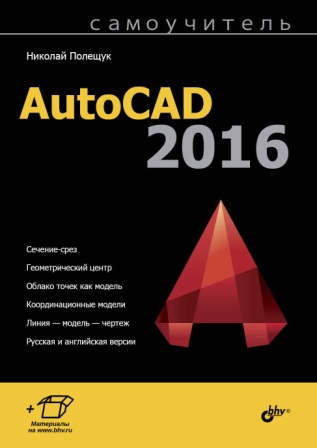
36. N.Poleshchuk. "AutoCAD 2016 - Self-Teacher" ("Self-Teacher" series). BHV-Petersburg, 2016, 464 pp. ISBN 978-5-9775-3644-8.
The book is based on author's methodics for teaching parametrical drawing and 3D modeling in the AutoCAD system. Approaches to graphical documents creation are shown. Styles technology (for texts, dimensions, sections and detail views) will help to prepare drawings by standards. Discovered stages of building, visualization and animation for 3D models. Described new operations on point clouds. There are examples and exercises for better learning. The book will be useful for engineers, designers, postgraduates and students.